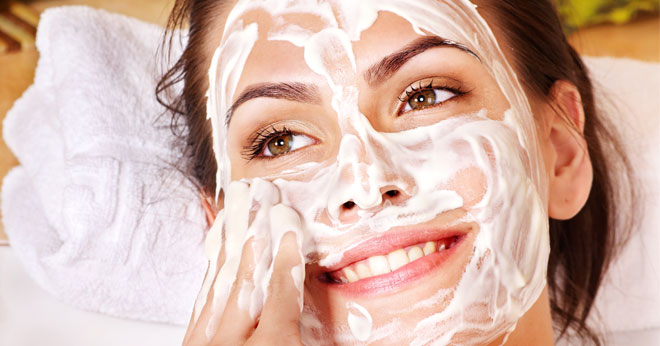Exfoliating is an essential part of any skin care regimen no matter what skin type you have. Regularly exfoliating is a good way to eliminate dead skin cells which can accumulate. Each day the body sloughs off about 40,000 dead skin cells which can build up if not removed. This will lead to clogged pores, dry skin and more. Although some of these are removed naturally, it can still be better to make it a point to remove it.
Aside from cleaning out dead skin cells, exfoliating can also help improve blood circulation. The movement involved helps provide more blood to the different organs and flush out toxins more effectively. This in turn brings about healthier skin and a natural glow.
With the benefits that exfoliating brings, it should be done on a regular basis. Most people do this at least once or twice a week. To help make the process easier, an exfoliant should be used. This step by step guide will teach you how to use one properly.
1. Determine What Type of Exfoliant to Use
There are two basic types of exfoliants. Mechanical exfoliants are those which slough off dead skin cells with the use of friction. Scrubs, dry brushes and loofahs are the most common types that can be found in beauty stores and drug stores. Such exfoliants are suitable for those who want the benefit of better circulation because of the scrubbing involved. On the other hand, it may not be for those with overly sensitive skin because it can be abrasive if not used properly.
Chemical exfoliants on the other hand eliminate dead skin cells by melting their bond away from the skin through a gentle acid. These are usually Alpha Hydroxy Acids (AHA) or Beta Hydroxy Acids (BHA). Chemical exfoliants are available over the counter as well. It is a good choice for those who want a gentler option, or if you plan on exfoliating only the face area. However, it can induce skin irritation depending on the formulation. It also increases sun sensitivity after use.
2. Prep for Exfoliating
Before you start the actual process pf exfoliating it can be good to loosen whatever dead skin cells there are. Using a dry brush, exfoliating gloves or a dry loofah, gently brush your entire body. You will want to start from the feet moving up towards the neck. Use long and swift strokes upwards to help blood flow to the heart. Do not scrub too hard since this can lead to skin abrasions or irritation. You may want to stand in the shower or tub during this process so the dead skin cells do not scatter.
3. Scrub Away
Give your body a quick rinse to dampen it. Apply your exfoliating cleanser or scrub of choice to your gloves, loofah or scrub cloth. Start scrubbing your body, again moving from the bottom moving upwards. This time use gentle circular motions. Hard to reach areas such as the back can be reached with the use of an exfoliating brush. Remember to use gentle motions and not to scrub too hard in areas where the skin is sensitive. This includes the face, armpits and bikini area. Often times, people get carried away and do not realize how hard they are scrubbing until they feel some kind of irritation afterwards.
4. Rinse and Cleanse
After you have scrubbed your entire body and face, rinse off with lukewarm water. After you have removed all of the exfoliating cleanser, you can cleanse your body and face following your usual shower ritual. Choose to use a gentle shower gel or body wash instead of soap. Exfoliating can already dry out the skin partially and using harsh bath products can dry it further.
Following your bath, rinse a second time but with cold water. This will help to close the pores which were opened during the exfoliating process. By closing your pores you can prevent bacteria from entering and irritation on the skin.
5. Moisturize Your Skin
As mentioned earlier, exfoliating can dry the skin out because it strips away all the dirt and oil. Although the skin underneath is soft it will be good to keep it hydrated to lock in moisture. You can do this by applying a body moisturizer or lotion. Natural products such as coconut oil and body butter are also excellent moisturizers that can nourish the skin while hydrating it.
6. Follow Your Regimen
Don’t make using an exfoliant a once in a while treat. Make sure that you include it in your weekly regimen to make the most of it. Once or twice a week is often enough. Any more and you may be doing more harm to your skin. Regular exfoliating will bring out a natural glow and make you look healthier and younger as well.
To get professional help with your skin, visit a local skin salon near you such as JCPenney Spa.
